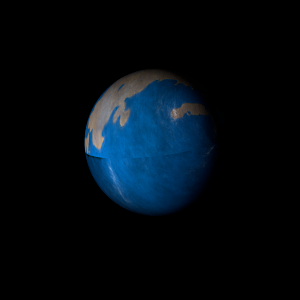|
|
Space Astro
|
Info for exoplanet "Cefran'porie"
| Scientific (actual) data |
|---|
| Name | Kepler-1189 b |
| Planet status | Confirmed |
| Radius | 0.158 |
| Orbital period | 3.78859 |
| Discovered | 2016 |
| Updated | 2021-02-05 |
| Tconj | 2454970 |
| Publication | Announced on a website |
| Detection type | Primary Transit |
| Alternate names | 2MASS J19534232+4756484 b, K02317.01, KIC 10684670 b, KOI-2317 b, KOI-2317.01, WISE J195342.33+475648.5 b |
| Star name | Kepler-1189 |
| Right ascension | 298.43° |
| Declination | 47.95° |
| Mag j | 13.066 |
| Mag h | 12.77 |
| Mag k | 12.675 |
| Star distance | 883 |
| Star metallicity | 0.08 |
| Star mass | 1.11 |
| Star radius | 1.16 |
| Star age | 3.39 |
| Star temperature | 6012 |
| Star alternate names | 2MASS J19534232+4756484, KIC 10684670, KOI-2317, WISE J195342.33+475648.5 |
| Wikipedia article | Kepler-1189 b |
Back
| |
| Fictional info (?) |
|---|
| Suggested name | Cefran'porie |
| Planet type | Cold planet |
| It is the coldest planetary atmosphere in its solar system, with a minimum temperature of 33°K (-240°C), and has a complex, layered cloud structure with hydrogen peroxide thought to make up the lowest clouds, and 2H2O the uppermost layer of clouds.
As seen from Kepler-1189, in a frame of reference that rotates with the orbital motion, it appears to rotate only once every two years.
It is radically different from Earth in other respects.
The volume of water ice in the south polar ice cap, if melted, would be sufficient to cover the entire planetary surface to a depth of 10 meters. |
| Atmosphere | 2H2O | 68% |
| Hydrogen peroxide | 26% |
| Sulfur dioxide | 5.3% |
| Hydrogen chloride | 0.0078% |
| Carbonyl sulfide | 2.0E-6% |
| Atmospheric pressure | 5 bar |
 |
| No known satellites |
| Google search for Cefran'porie |
|
Website by Joachim Michaelis
|
|
|
|